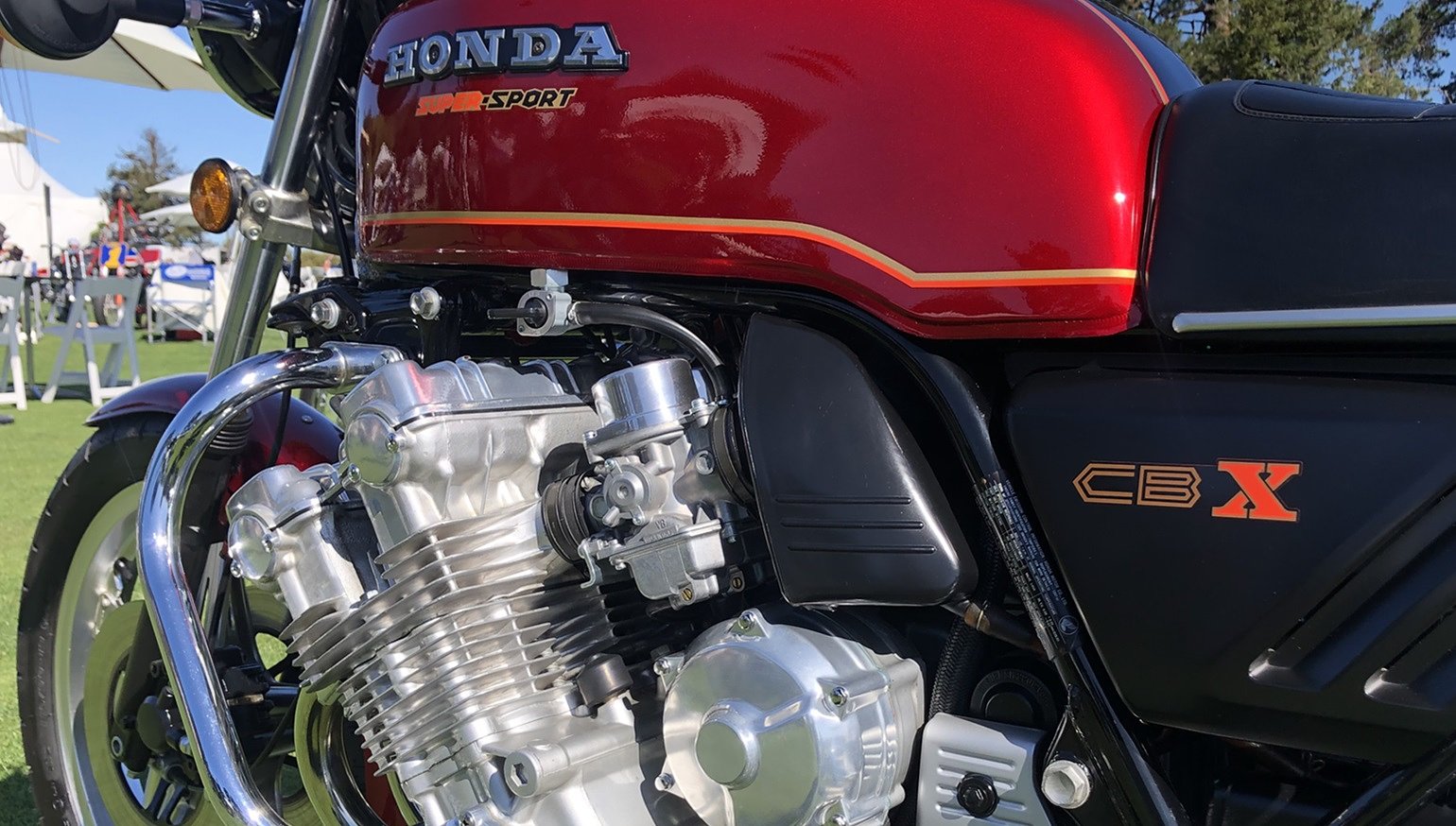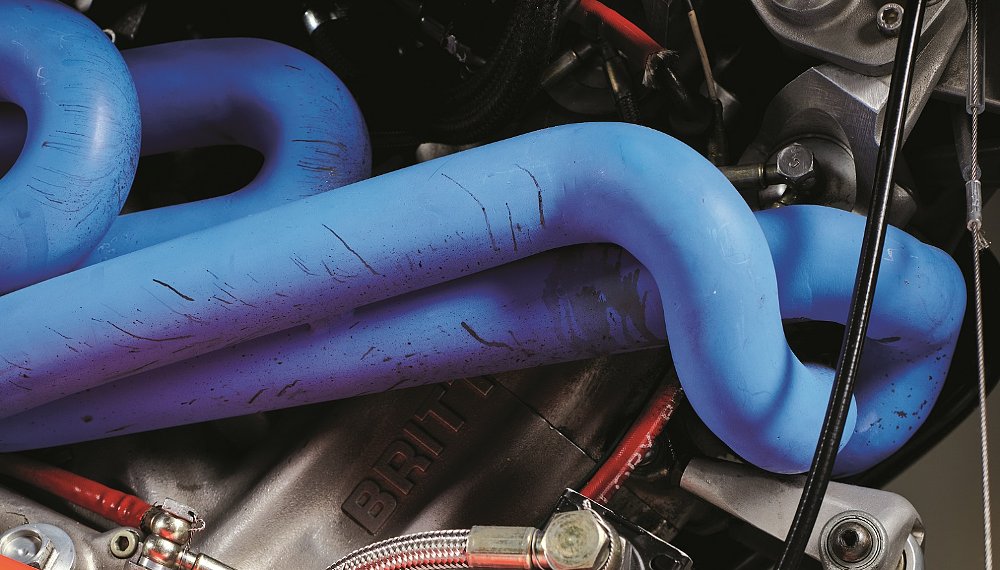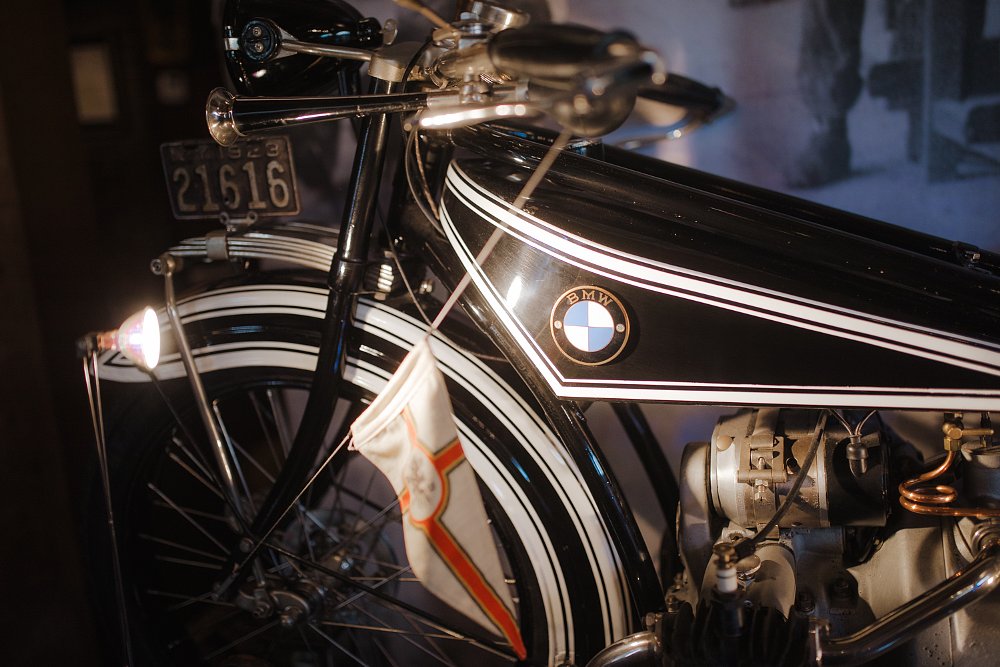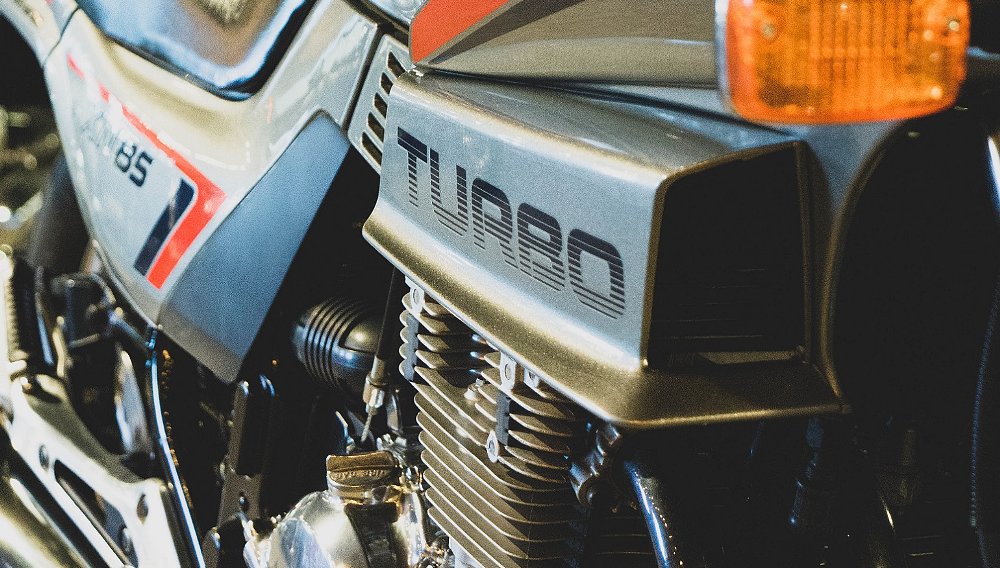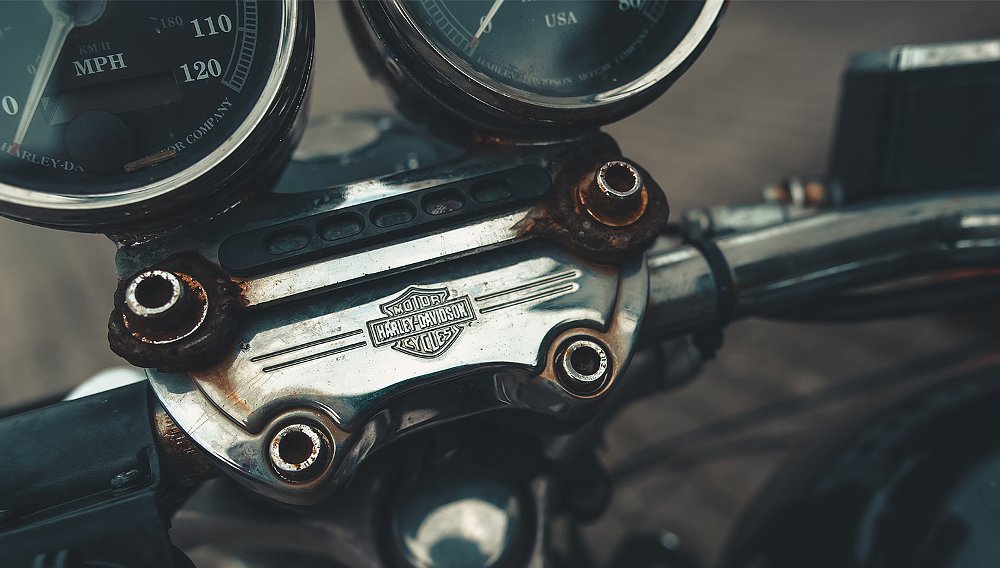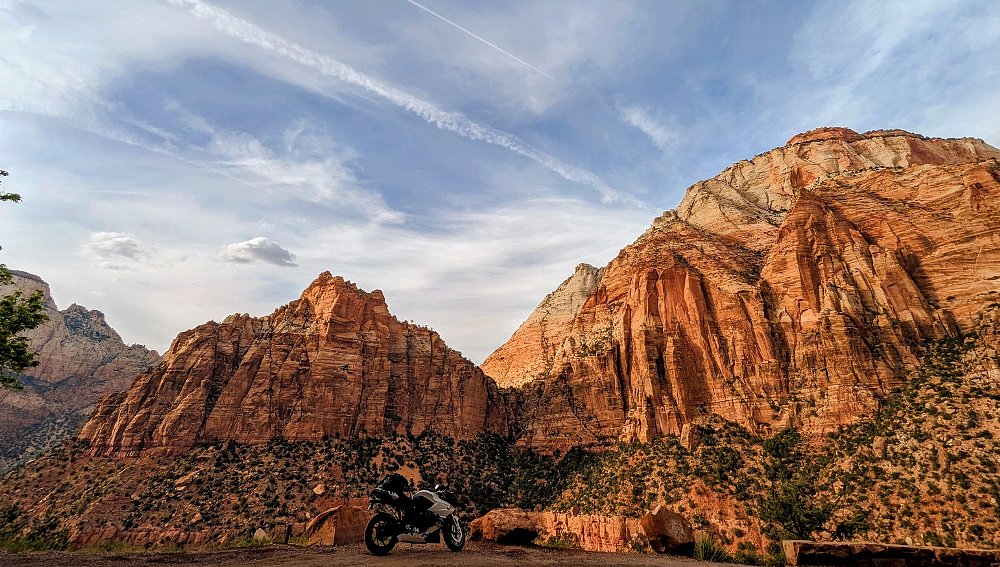What has 30 carbs, 120 valves, and feeds on a steady diet of preventive maintenance and race gas? Albert Catelani's Honda CBX collection.
As the former owner of a 1982 CBX myself, I understand that appeal of owning one — just one. But Catelani has five CBXs, which is at least three beyond the bounds of sanity by anyone's measure.
The CBX debuted in 1979 and was the most outlandish, complex, and audacious street bike ever to come out of Japan. It caused a critical shortage of superlatives among magazine testers and prompted an epidemic of dropped jaws among the riding public. But this mighty mic drop from Honda R&D's Because We Can, That's Why Department, languished on the showroom floor, upstaged by cheaper, simpler, and easier-to-live-with four-cylinder superbikes from rival manufacturers.
The 1980 CBX was modified to correct some of the shortfalls in the first model, but it sold little better than its predecessor. So, in 1981 Honda transformed the hot-eyed six into a genteel sport-tourer, with a fairing, a single-shock rear suspension, and stylish panniers. The model's last year was 1982, after which it disappeared from the lineup and passed into legend.
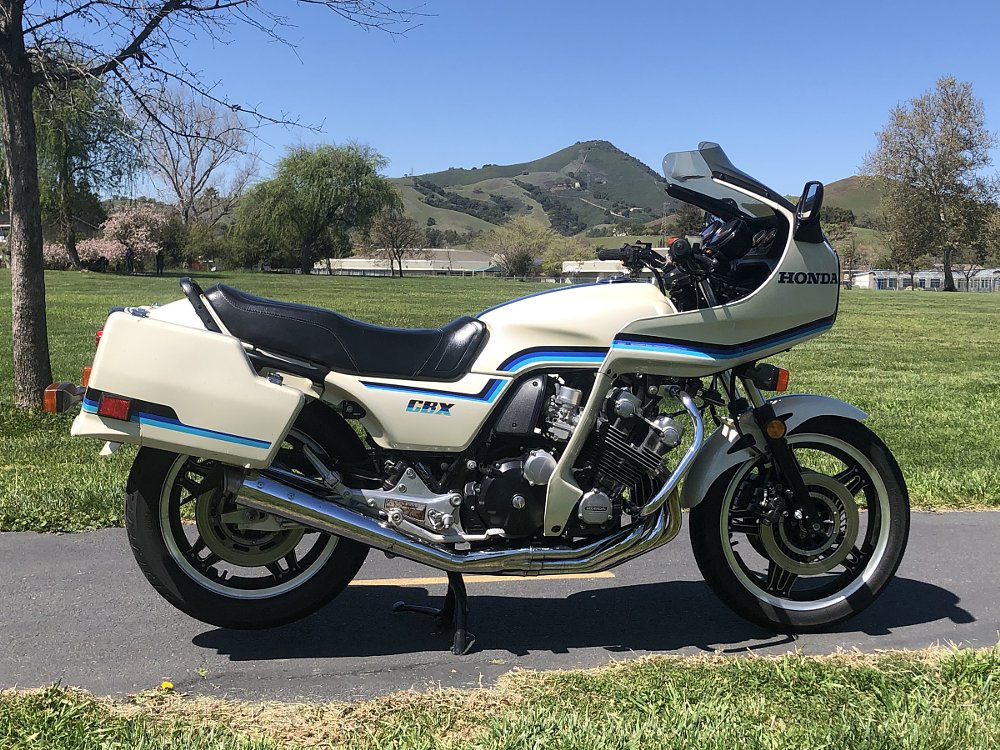
How a CBX collection grows
Catelani's descent into CBX madness began, oddly, with the urge to own another bike altogether.
"I was at a point where had a German, a British, and a Japanese motorcycle, and it occurred to me it would be neat to get an Italian bike," he says. "The Benelli Sei jumped out at me. They were good looking, and I thought it would be neat to have a six-cylinder bike. But they were very hard to come by and I couldn't find one that was worth my time. But while I was looking I came across a nice '82 CBX in Southern California in a private collection. I ended up buying it. It wasn't Italian but it was a six so I was happy with that."
If you think finally bagging a CBX satisfied Catelani's jones for a six-cylinder motorcycle, think again.
"I don't know what happened to me but about six months later I found the same year model year at a dealer in Wisconsin," he says. "They were giving it away for dirt cheap, with low miles, and in beautiful shape. I thought, 'Why not?' Maybe I can make a little collection here and get one from every year."
From there the inevitable happened. "I started looking and the next one I found was a 1980, privately owned, and in nice shape with a six-into-one Kerker on it, but used hard. I bought that one as well."
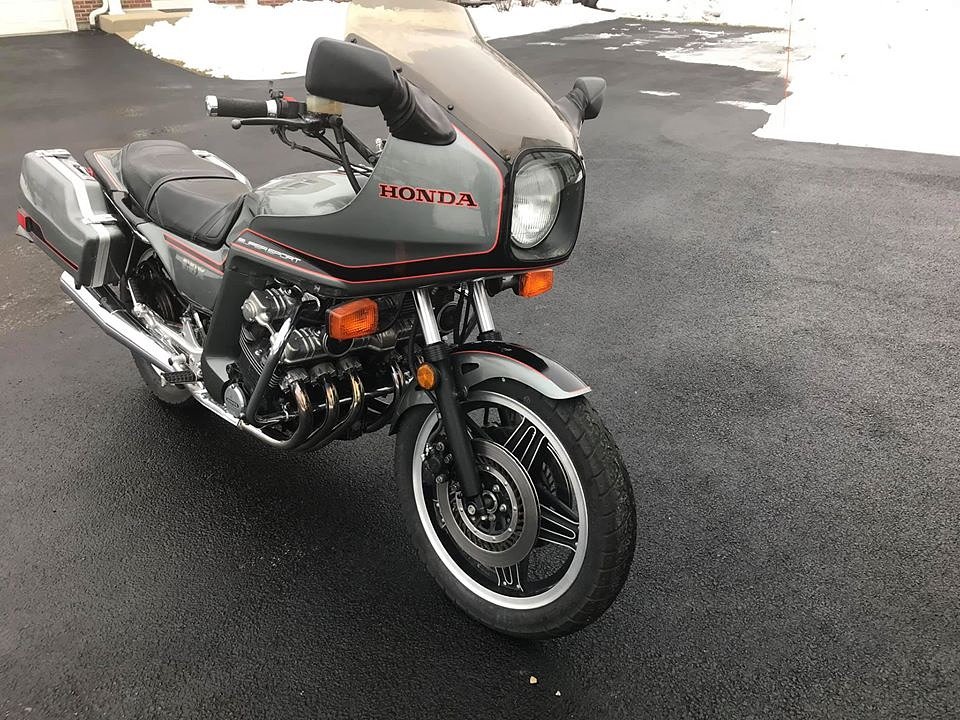
That was in April of 2020. "A few months later I found an '81. The owner had one of each year of the CBX, which was the same goal I had. He was willing to sell the '81 but he violated the cardinal rule — when I got there it was running. But it was nice shape so I bought it. After I got it home it was hard to start and didn't want to run worth a damn when it was cold. OK, I thought, it's a project bike. I put it in the garage."
Anyone else would have called it a day, but not Catelani. "I was looking this whole time for a '79, the first year they made them," he says. "They made quite a few but a lot of them are trashed now. I found a red '79 in a suburb of Detroit. The owner had it in his house. It turned out to be a beautiful bike."
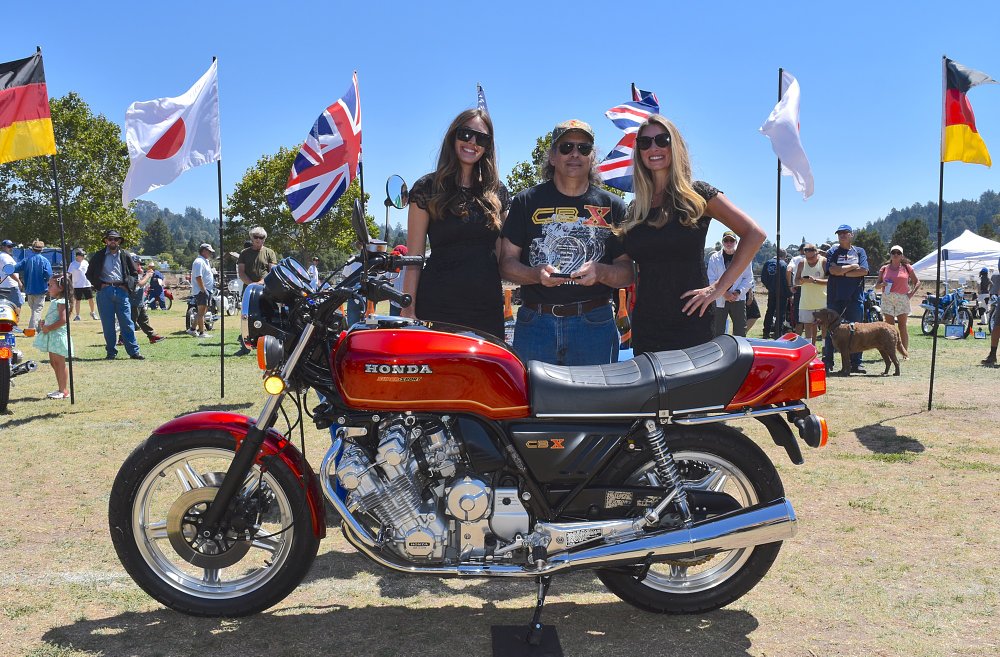
So by 2021, just a couple of years after he started shopping for a Benelli, Catelani had five CBXs instead. It was here the madness stopped.
"I haven’t bought anything else since then, partly because of a bargain I made with my wife," Catelani says. "I can have as many bikes as I want as long as she can still park her car in the garage. I've been working on them to make them factory correct, and doing a number of things like new clutches, valve adjustments, brake overhauls, and carb overhauls — except the '79. I haven’t touched it. Other than oil changes, it hasn't had any issues at all."
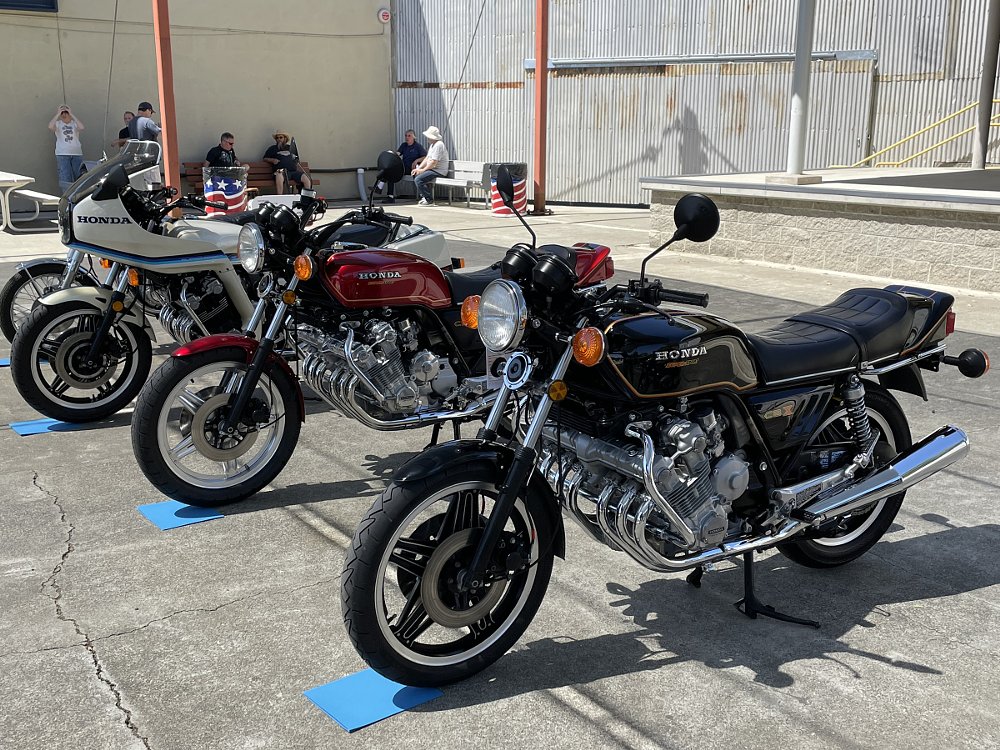
Care and feeding of a CBX collection
That the CBX was a marvel of engineering is well known, but not so well known is that they're a lot of work to keep running right.
"I learned the hard way that these are pretty persnickety engines, especially the carbs," he says. "They have very small idle jets, and if you don't run them for a couple of months they get plugged up. In that case, your only option is to rebuild the carbs, which is time-consuming and expensive. I've switched from pump gas to racing fuel, which lasts a lot longer, up to two years before it starts to break down. It's expensive, but it's cheaper than a carb overhaul."
At this point I made what I believed to be a generous offer, to put one of Catelani's CBXs in my garage and ride it regularly. His answer was predictable: "Get in line." But the more I learned about routine maintenance on the six, the less I regretted the refusal. Twenty-four valves make valve adjustment an all-day job, one that includes unbolting the engine and exhaust system almost completely from the chassis to tilt the engine far enough forward to remove the valve cover. The recommended valve-adjustment interval is 4,000 miles, and no matter what the manual says, Catelani changes the oil in each of his five sixes once a year, whether he's ridden it five miles or 500 since the last oil change.
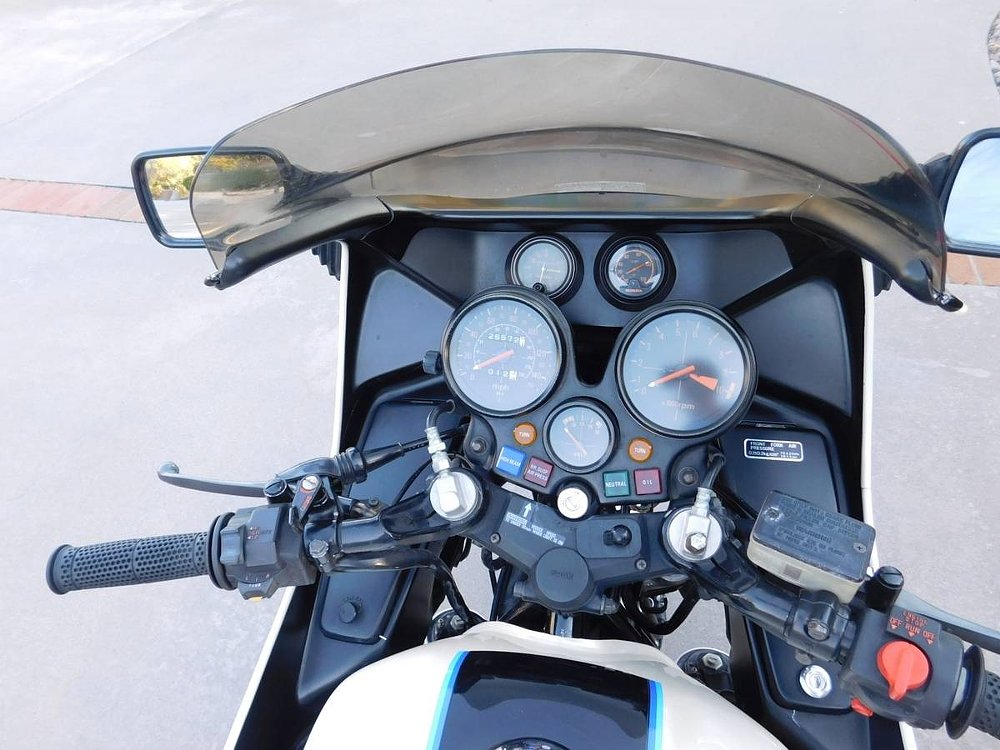
Is all of this hassle worth it? Does the CBX live up to its legend?
"I think it does. They're like a locomotive — they pull and pull — and they're not much wider than a 750. They're showstoppers, too. I have other bikes that I bring to shows but they don't get the same reaction the CBX does. It's the one people come by and just stop and look at it. A lot of people have never seen one."
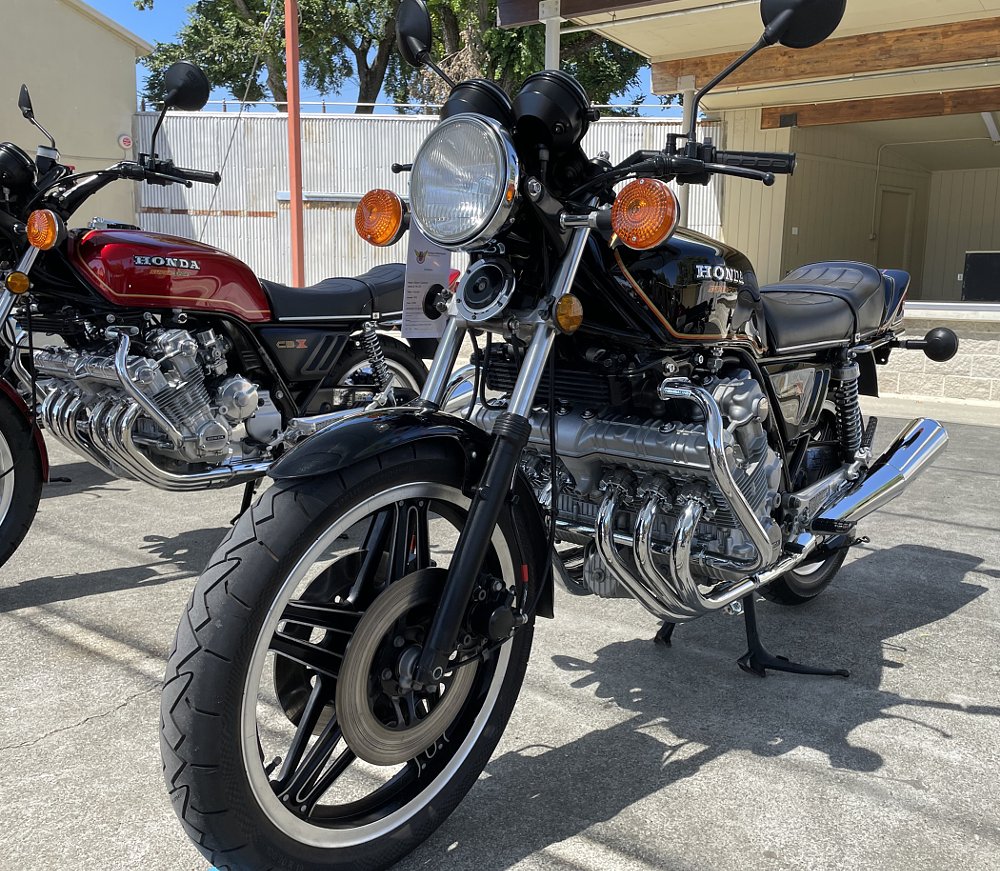
Catelani has some hard-earned advice for anyone who wants a CBX.
"They're an enticing bike," he says. "They draw you in with the exhaust sound, and it's cool to have a six. But they're like a race car — you can't just park them and three months later think you're going to have the same level of maintenance and performance. They're all more than 40 years old. There are still a lot of parts out there, but you'll pay a premium for them. And if you don't have the mechanical ability to work on one, finding a CBX guy is getting harder. If you're willing to accept all that as part of the price of admission, you'll have a wonderful motorcycle."
Barring an extension on the family garage, his CBX collection seems destined to stop at five. But it might be time to start drawing up plans because, as Catelani admits, "I still think about getting an Italian bike…"




